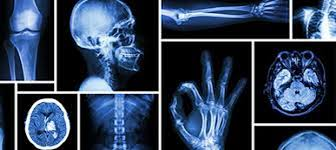Radiology has participated in the recent trend towards computerized management in the health service and has responded to the demand for cost efficient and rapid communication between departments of radiology and their users.
Distal imaging acquisition has become the standard for modern equipment used in ultrasonography, computed tomography, magnetic resonance imaging, angiography and radionuclide radiology.
All types of diagnostic images can now be acquired as distal signals.
Digital imaging and development in computer technology and telecommunication mean that the filmless radiology department is technically feasible.
Computed Tomography: Faster image acquisition in computed tomography has extended its diagnostic applications. Current CT scanner can acquire data in a continuous helical or spiral fashion, shortening acquisition time and reducing artifacts caused by patient movement. Virtual endoscopy using reconstructed computed tomographic data to simulate intraluminal views of hollow organs may be useful in patients who are unsuitable for invasive endoscopy.
Magnetic resonance imaging: MRI continues to develop rapidly, propelled by the benefits of shorter scan time and the potential to provide functional information. Improved performance of the hardware and new software for image acquisition and reconstruction has dramatically shortened scan time, increasing the robustness and cost effectiveness of the investigation. The distal signals can be acquired, processed and displayed in several images.
Ultrasonography: Advances in probe design, which enable endoluminal ultrasonography to be performed. Ultrasound probes of small diameter and very high frequency can now be inserted into the coronary arteries to assess plaques and degree of stenosis. Volumetric ultrasound can be displayed as three dimensional or surface rendered images and has potential application in obstetrics and gynecology. Use of higher harmonic frequencies generated by propagation of the ultrasound beam through the patient improves the quality of the image in clinical applications.
Imaging of functions: Most radiological techniques depend on morphological changes for detecting disease, while radionuclide imaging primarily shows abnormal function. Positron emission tomography (PET) using the radionuclide 18-fluro-deoxy glucose shows difference in glucose metabolism between benign and malignant tumors.
Functional magnetic resonance imaging uses specific pulse sequences and sophisticated image processing techniques to map brain activation in response to various motor and sensory stimuli onto anatomical images.
Diffusion weighted magnetic resonance imaging provides early evidence of acute cerebral ischemia before structural changes become apparent.
New or updated radiology equipment and techniques are expensive and may not be cost effective in every radiology department.
Tremendous progress has been made in interventional radiology in recent years, advances in diagnostic imaging that has resulted from recent technical innovations.
Conclusions: Diagnostics imaging has exploited advances in technology and computation to provide greater insight into physiological structures and function for medical application.
–Dr. Arun Gupta
MBBS DN RD





